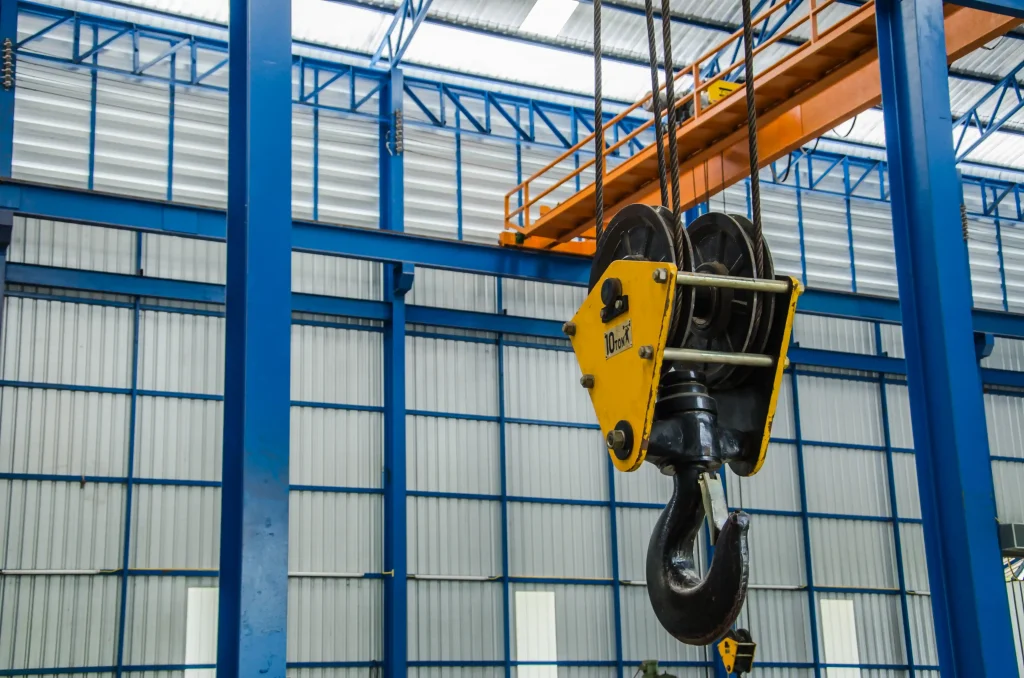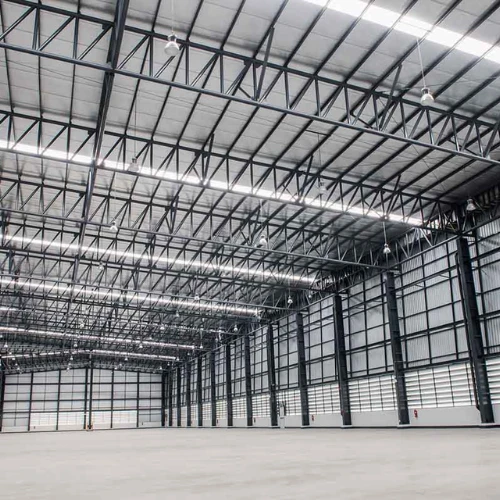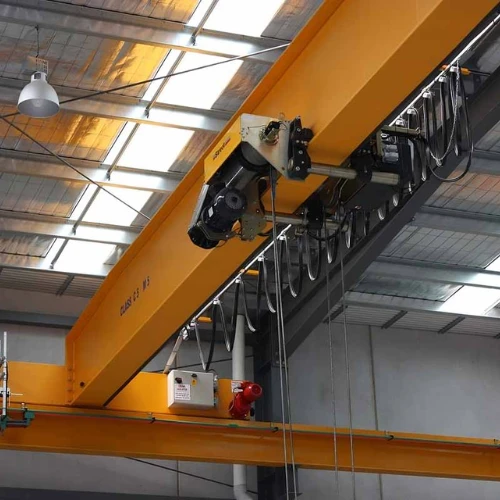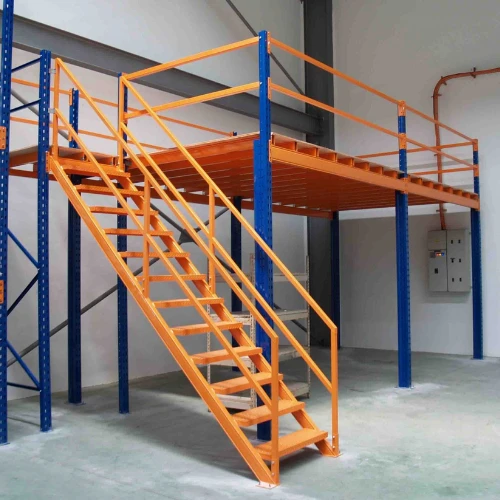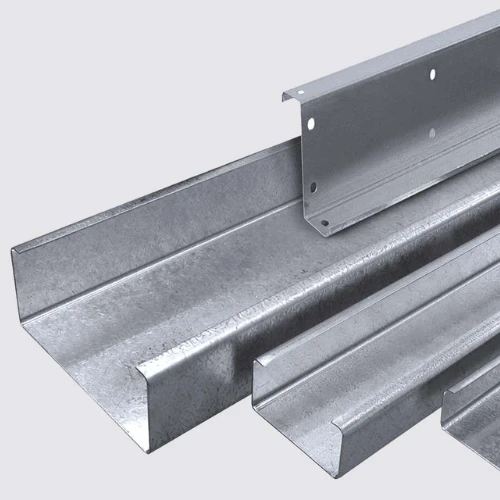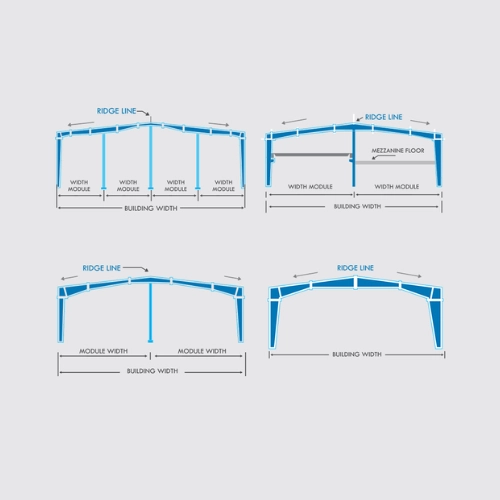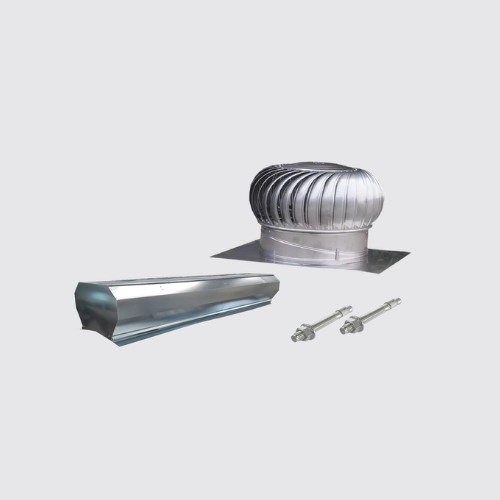Introduction
Pre-Engineered Buildings (PEBs) are now the backbone of industrial, logistics, and commercial infrastructure. One of the most important components that determines how these buildings perform is the crane systems. Far beyond simple lifting tools, crane systems influence design, efficiency, safety, and long-term costs. For any PEB manufacturer or contractor, selecting and integrating the right system early is vital. This FAQ guide from Choice Prefab, a trusted PEB manufacturer, answers the most common questions about crane systems in PEB buildings, covering types, costs, safety, and modern automation.
FAQs on Crane Systems in PEB Design
1. What are crane systems in PEB buildings?
Crane systems are mechanical lifting solutions designed to move materials and heavy loads safely within pre-engineered buildings. They play a central role in manufacturing, warehousing, logistics, and assembly plants. For builders, contractors, and every Creane manufacturer in Ahmedabad, incorporating crane systems into the structural design ensures smoother operations and durability of the structure. Without planning for them upfront, later modifications can be costly.
2. Which types of crane systems are commonly used in PEB design?
Industry-standard crane types for PEB structures include:
- Overhead EOT Cranes – Single or double girder; can be top-running or underhung; suitable for medium to heavy loads.
- Top-Running Cranes – Run on rails mounted above runway beams, ideal for heavy-duty lifting.
- Underhung (Suspension) Cranes – Hung from roof structures, suitable for light to medium duty.
- Gantry Cranes – Supported on legs running on ground rails, used in fabrication yards or large warehouses.
- Monorail Cranes – Travel on fixed, straight or curved tracks, widely used in assembly lines.
- Jib Cranes – Wall-mounted or free-standing, designed for localised lifting in workshops.
- Specialised Cranes – Explosion-proof cranes for chemical plants, foundry cranes for steel industries, workstation/KBK cranes, and automated cranes for smart warehouses.
A professional PEB manufacturer, like Choice Prefab, tailors building design according to the load, span, and operational needs of the chosen crane system.
3. How do crane systems affect PEB building design?
Integrating crane systems in PEB design changes key architectural and engineering aspects:
- Column spacing and bay width – Heavier cranes require reinforced columns.
- Clear height requirements – Overhead crane systems need additional headroom.
- Runway beams and rails – Must be planned early to avoid later disruptions.
- Load-bearing capacity – The structure must withstand dynamic loads during lifting operations.
Contractors working with a skilled PEB manufacturer ensure these elements are addressed during design, preventing future challenges.
4. What factors should contractors consider before installing crane systems?
Contractors and builders should evaluate:
- Load capacity (tonnage requirements) – whether a single girder or double girder crane is required.
- Span and coverage – warehouse size and workflow.
- Frequency of usage – continuous heavy-duty vs occasional lifting.
- Environment – temperature, dust, or chemical exposure.
- Safety codes – compliance with OSHA, IS codes, or international standards.
Partnering with an experienced PEB manufacturer ensures crane type, structure, and safety align seamlessly.
5. What is the cost of installing crane systems in PEBs?
The cost of crane systems in PEB buildings depends on:
- Crane type (EOT, gantry, monorail, jib).
- Load capacity and span.
- Degree of automation (manual vs IoT-enabled).
- Building reinforcements needed.
- Maintenance requirements.
While upfront costs vary, a reliable PEB manufacturer like Choice Prefab designs buildings to minimise future structural modifications, ensuring long-term savings.
For instance, overhead crane systems in PEB warehouses may require greater structural investments compared to jib or monorail cranes, but they deliver higher efficiency for large-scale operations.
6. Are crane systems safe for long-term operations in PEB buildings?
Yes, provided crane systems are designed, installed, and maintained properly. Safety depends on:
- Regular inspections and load testing.
- Preventive maintenance schedules.
- Operator training.
- Use of certified components and compliance with codes.
A trusted Crane manufacturer in Ahmedabad such as Choice Prefab, integrates advanced safety features like anti-collision devices, emergency brakes, and limit switches. This ensures safe, long-term operations in PEB warehouses and factories, while also meeting safety standards for crane systems in pre-engineered buildings.
7. Can existing PEB structures be retrofitted with crane systems?
Yes, but it depends on the current building’s strength. Retrofitting crane systems may require structural reinforcement of columns, runway beams, or adding additional supports. Contractors should always consult their PEB manufacturer to check feasibility. Retrofitting crane system in pre-engineered buildings is common when warehouses expand operations or shift to heavier lifting requirements.
8. How do modern crane systems support automation in PEB warehouses?
New-generation crane system integrate IoT, sensors, and remote-control technologies. These automated solutions improve accuracy, reduce downtime, and enhance warehouse efficiency. PEB manufacturers are now designing future-ready PEBs to accommodate automated crane system, especially for e-commerce, logistics, and manufacturing units. Modern IoT-enabled cranes in pre-engineered buildings make operations safer, faster, and cost-efficient.
9. How do crane systems improve efficiency in PEB projects?
By reducing manual labour, speeding up lifting operations, and ensuring safer workflows, crane system make PEB projects more efficient. Whether moving raw materials in a steel plant or finished goods in a warehouse, cranes shorten operation cycles. A professional PEB manufacturer ensures crane alignment with workflow, cutting delays and costs. For example, overhead EOT cranes in steel fabrication PEBs have transformed productivity by minimising handling time.
10. What are the long-term benefits of investing in crane systems for PEBs?
The advantages of crane systems in PEB buildings include:
- Reduced operational costs.
- Enhanced safety for workers.
- Scalability for future expansions.
- Increased productivity and uptime.
- Boosted property value.
Choosing a knowledgeable PEB manufacturer ensures the crane type fits your long-term vision. The long-term ROI of crane systems in PEB design justifies the investment by combining efficiency, safety, and growth potential.
Conclusion
Crane systems are an integral part of PEB design. They shape safety, efficiency, cost, and scalability. Builders and contractors who consult experienced PEB manufacturers like Choice Prefab early on avoid costly errors, ensure compliance, and create future-ready infrastructure. Whether it’s an overhead EOT crane, a gantry system, or an automated warehouse solution, Choice Prefab ensures the right crane system is integrated seamlessly to transform a PEB project into long-term success. To learn more about tailored crane system solutions, connect with Choice Prefab today.

